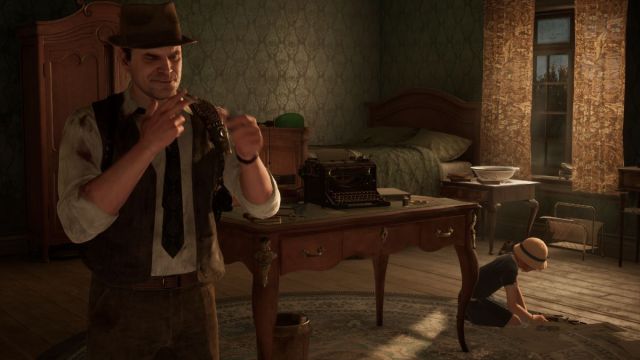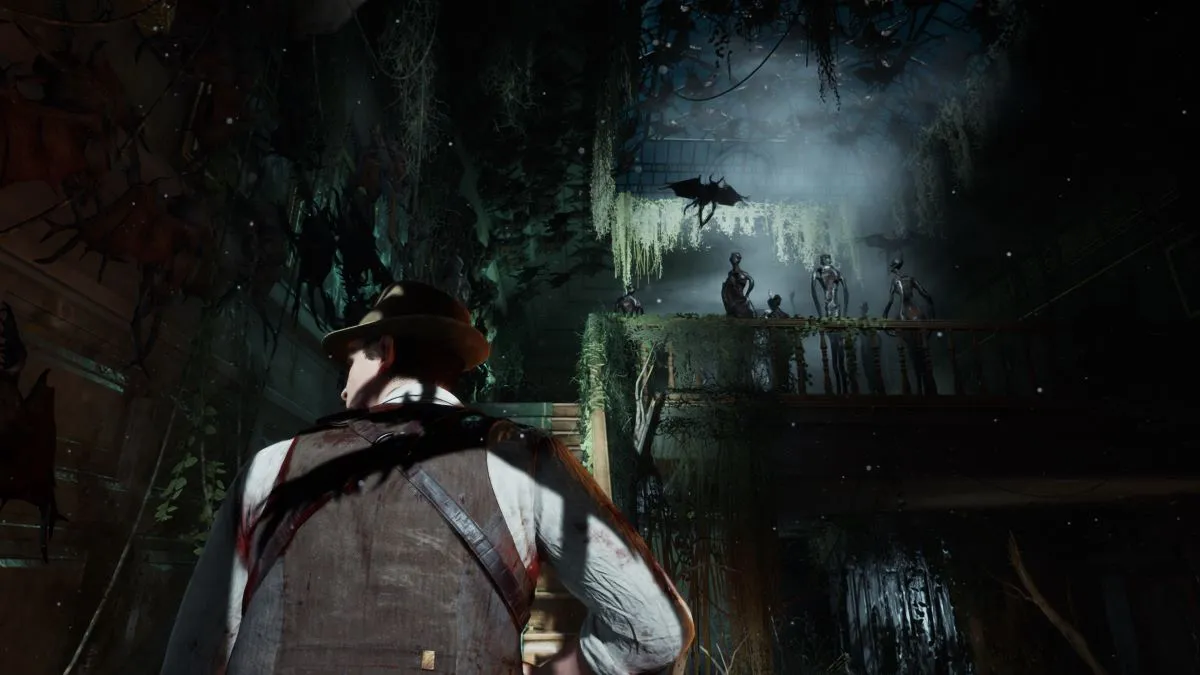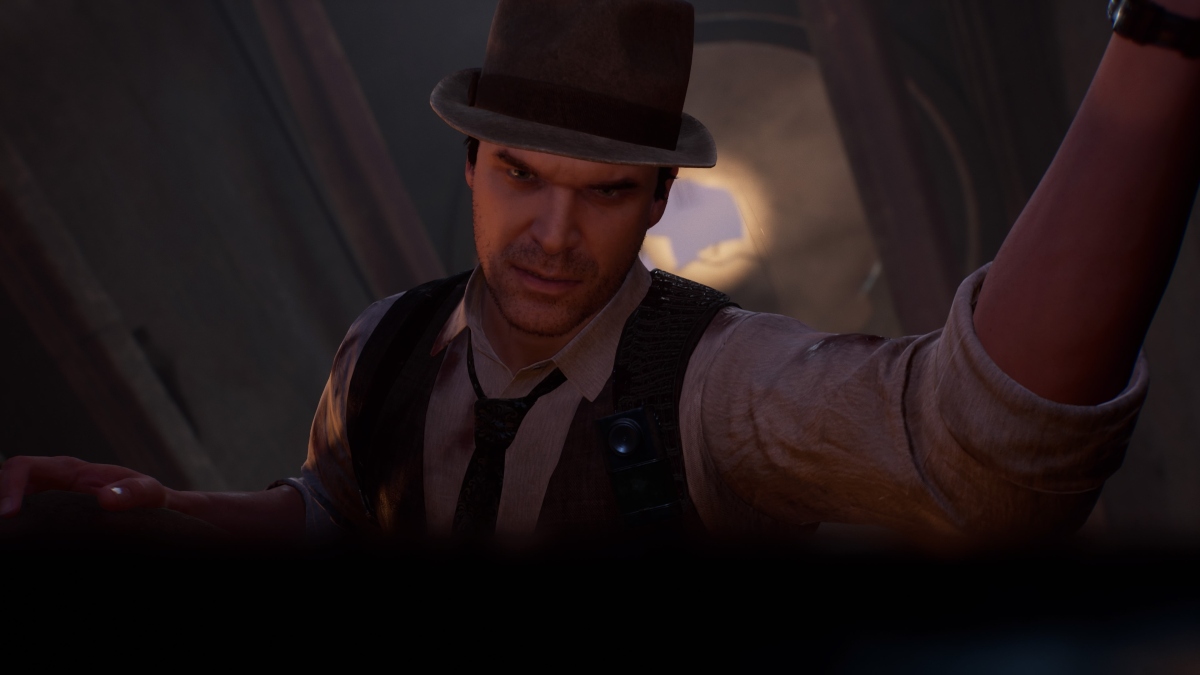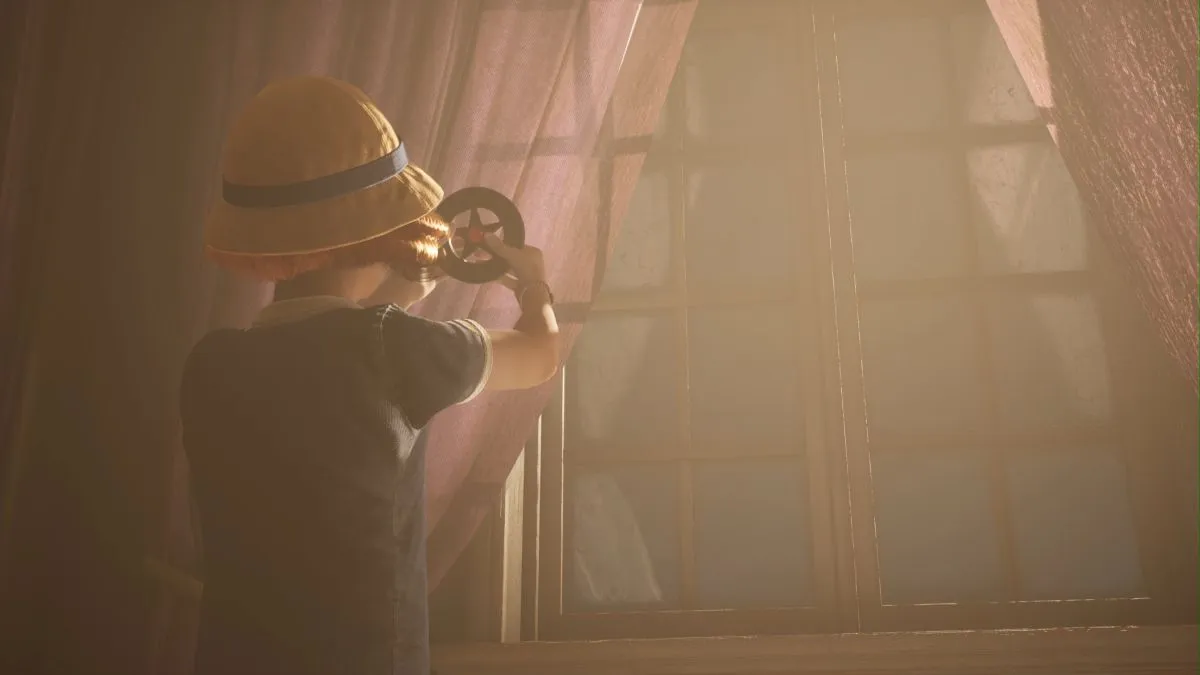Have you ever wondered what would happen if H.P. Lovecraft hired Agatha Christie to pen a Resident Evil game in his style? I’ll be honest—I hadn’t either. The 2024 reimagining of Alone in the Dark is a game I didn’t know I needed.
Two weeks after receiving a copy, I’m finishing my fifth playthrough in search of those last few pesky hidden collectibles. My friends and family are sick of hearing me try to piece together the dark and twisting narrative, rich with foreshadowing and symbolism—but I can’t stop thinking and talking about it. Alone in the Dark isn’t for everybody: It’s mechanically simple and treats combat as an afterthought. However, if you value rich storytelling, compelling characters, and a setting so full of life and mystery that it essentially becomes a character itself, this game is for you.
I compared Alone in the Dark to Resident Evil, and while I stand firmly by that comparison, you could argue it should be the other way around. The original Alone in the Dark from 1992 was the first 3D horror survival game. The 2024 iteration may draw deeply from Resident Evil’s gameplay style, but that style might have never been developed without the original Alone in the Dark
Like the 1992 game, Alone in the Dark brings you to the macabre, enchanting Derceto Manor in 1920s Louisiana. Emily Hartwood has hired detective Edward Carnby to accompany her to Derceto after receiving a deeply unsettling letter from her uncle, Jeremy. While there are easter eggs and nods to the original throughout, the major plot similarities end here.
In the original game, Jeremy owned the mansion before dying by suicide prior to Chapter One. This time, Derceto is an asylum for the “mentally fatigued,” and Jeremy is a patient. In his letter to Emily, Jeremy warned of a terrible evil nursed in the manor, and then he vanished. It’s up to you whether you play as Emily or Edward while unearthing the many mysteries of Derceto, but you need a second playthrough as either character to get the whole picture.
The game uses modern movement with an over-the-shoulder view, but the gameplay relies heavily on reading, problem-solving, and critical thinking—just like the 1992 original. This reimagining is a love letter to the classics, which brings me to my favorite part of the gameplay: the puzzles.
Mind over matter

Stellar puzzle design always deserves extra respect. Puzzles must hit a sweet spot between being too easy and too difficult. If a boss fight is too challenging, its health or damage can be tweaked—but if a puzzle is too hard, there’s no clear path forward for the designers because even a small hint can instantly make it too easy.
Alone in the Dark hits this balance time and time again. Every puzzle genuinely challenges you, and in each chapter of the game, I found myself reaching that sweet spot of frustration you need for a reward to really feel earned. Most of the puzzles are text-based and require you to scour written clues with a keen eye to pick out secret codes, spot hidden meanings, and crack ciphers. These solutions will often be relevant again later, which means you get to learn and gain proficiency as you progress. In many ways, puzzles are the main antagonist of this game, and the cohesion between them lets you continuously better your odds against that antagonist by learning to recognize the patterns and logic persistent throughout.
There is a flip side to this—the enemy variety, weapon handling, and combat fluidity of Alone in the Dark all feel very dated. The need to use your weapon at all doesn’t come about often. But when it does, unpredictable hitboxes and awkward weapon sensitivity made me wonder if shooter elements even needed to be included in the first place. It’s clear that special attention was given to puzzle design, and on the flip side, it’s clear that a less-than-average amount of time was spent smoothing out the game’s combat.
If you ask me, diving into Alone in the Dark for the combat would be akin to seeing a Godzilla movie for the plot. At the same time, I don’t think any aspect of a game should be easy to pinpoint as one that less work went into—and that is unfortunately the case for combat in Alone in the Dark.
Retelling the Hartwood tale

How a story is told is just as important as the events unfolding, and Jodie Comer and David Harbour do a phenomenal job of bringing Emily Hartwood and Edward Carnby to life. There isn’t a single cast member who doesn’t imbue a unique creative flair into their character’s voice.
Alone in the Dark has plenty of written text, from books and clues to patient files and transcripts. Every piece of writing includes voiced audio from the character responsible for it, and the voice work never falls flat. You could almost remove the visual side of the game entirely, and you’d be left with a compelling and clear mystery podcast.
In a sea of remakes and unearthed old IPs, something rarely stands out as different enough from its original to feel unique while staying similar enough to earn the same title. Alone in the Dark 2024 achieves this balance shockingly well. This is a fresh story, but the respect and adoration of the original are clear at every turn. Because that original happens to be the grandfather of survival horror, Alone in the Dark is a must-play for any fan of the genre.
- Compelling plot with rich dialogue and characters
- Stylish and unique settings
- Elaborate puzzles and mysteries
- Brilliant foreshadowing and symbolism
- Clunky gunplay
- Minimal enemy variety
- Buggy collectible progress at release







Published: Mar 19, 2024 08:59 am